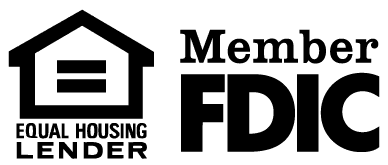When you’re preparing to apply for a loan, knowing where to start can make all the difference. A Loan Eligibility Checklist with seven essential steps is your guide to steering through this often complex process. You’ll want to verify your credit score and gather necessary income documentation right away. But that’s just the beginning. With your employment history and debt-to-income ratio under scrutiny, understanding these elements is vital before making your move. Discover how defining your loan’s purpose and preparing collateral information can set you up for success. Ready to transform your loan application strategy?
Verify Your Credit Score
Understanding your credit score is an essential step in determining your loan eligibility. Your credit score is a numerical representation of your creditworthiness, influencing lenders’ decisions. A higher score generally means better loan terms, while a lower score might limit your options. The credit score impact is substantial; it affects interest rates, loan amounts, and approval chances.
To verify your credit score, start by obtaining a free copy from major credit bureaus. Review it for accuracy, as errors can negatively affect your score. If you spot mistakes, dispute them promptly to prevent unnecessary credit score impact.
Improving credit is vital if your score isn’t where you’d like it to be. Focus on paying bills on time, as payment history is a major factor. Reducing outstanding debt also helps, especially high credit card balances. Consider keeping credit utilization below 30% of your credit limit.
Additionally, avoid opening too many new accounts at once, as each application can slightly lower your score. Over time, maintaining responsible credit behavior will improve your credit, enhancing your chances of securing favorable loan terms.
Gather Income Documentation
Once you’ve verified your credit score, the next step in evaluating loan eligibility is to gather income documentation. This process is vital because lenders need to assess your ability to repay the loan.
Start by identifying all your income sources. These can include your salary, freelance work, rental income, or any other consistent financial inflow. Each income source requires specific documentation types.
For salaried employees, your most recent pay stubs, typically from the past two to three months, are fundamental. If you’re self-employed or have freelance income, you’ll need to present your most recent tax returns, usually covering the last two years, along with profit and loss statements.
Rental income? You’ll need copies of lease agreements and bank statements showing deposit records. If you receive any alimony or child support, make certain you have legal documents and bank statements to verify this income.
Don’t forget to include any additional sources like social security benefits or investment returns, with accompanying documents.
Review Employment History
Your employment history serves as an essential pillar in your loan eligibility assessment. Lenders want to see a track record that demonstrates job stability. Consistent employment over the years indicates reliability and the ability to meet financial commitments. If you’ve steadily held positions in your field, it suggests a stable income flow, which lenders find reassuring.
However, employment gaps can raise red flags. They might suggest instability or the potential for future unemployment. It’s important to address any notable employment gaps in your history. If you took time off for valid reasons, like further education or family responsibilities, be prepared to explain these to potential lenders. Offering context can alleviate their concerns and strengthen your application.
Consider also whether your employment trajectory shows growth or advancement. Promotions or taking on greater responsibilities can indicate professional growth and financial stability. If your job history reflects upward mobility, this could work in your favor, showcasing your commitment and ability to succeed in your career.
Ultimately, a well-documented and stable employment history can greatly bolster your chances of securing a loan. Take the time to review and present it effectively to meet lenders’ expectations.
Assess Debt-to-Income Ratio
A crucial component of determining loan eligibility is evaluating your debt-to-income (DTI) ratio. This ratio helps lenders assess whether you can manage monthly payments on the new loan. To calculate your DTI, divide your total monthly debt payments by your gross monthly income. A lower DTI indicates better debt management and enhances your chances of loan approval. Generally, lenders prefer a DTI ratio below 36%, but requirements can vary.
To improve your DTI, focus on effective financial planning. Start by listing all your current debts, including credit cards, mortgages, and other loans. Identify opportunities to reduce these debts, like consolidating loans or negotiating lower interest rates. Paying more than the minimum on your credit cards can also help improve your ratio over time.
Consider creating a budget that prioritizes debt payments and cuts unnecessary expenses. This disciplined approach not only aids in debt reduction but also strengthens your financial profile.
Determine Loan Purpose
After evaluating your debt-to-income ratio, it’s important to clearly define the purpose of your loan. Understanding why you need a loan sets the foundation for your financial journey. Are you looking to consolidate debt, purchase a home, fund education, or expand your business? Each of these goals requires a specific loan type, and knowing your purpose helps you choose the right one.
Think about your financial goals. If you’re aiming to buy a home, a mortgage is your best bet. For education, student loans are more suitable. If consolidating debt is your goal, consider a personal loan. Business loans are ideal for expanding your business endeavors.
Clearly defining your loan purpose not only aligns with your financial goals but also narrows down the numerous loan types available, making it easier to find the best fit.
Once you’ve determined your purpose, you can communicate it to potential lenders. This clarity is essential because lenders often tailor their offerings based on your needs. A well-defined purpose increases your chances of approval and guarantees you’re on the right path to achieving your financial goals.
Prepare Collateral Information
Gathering information about collateral is an essential step in the loan application process. Lenders need assurance that they can recover their funds if you default, and that’s where collateral comes in. Start by identifying the collateral types you can offer. Common options include real estate, vehicles, equipment, or even savings accounts. Each type has its advantages, so consider what aligns best with your loan needs and the lender’s requirements.
Once you’ve identified potential collateral, you’ll need to determine its current market value. This step is critical because lenders will assess the worth to guarantee it adequately covers the loan amount. You might use valuation methods like property appraisals for real estate or Kelley Blue Book values for vehicles. For business equipment, professional appraisals or recent purchase receipts might be necessary.
Being thorough in this process can greatly impact your loan application’s success. Incomplete or inaccurate information about your collateral can lead to delays or even denials.
Complete the Application Process
With your collateral information prepared, it’s time to plunge into the loan application process. Start by selecting the right loan type that aligns with your needs. Whether you’re eyeing a personal loan for home renovations or a business loan to expand your venture, understanding the specific requirements of each loan type is essential.
Lenders often have different criteria depending on the loan type, so tailor your approach accordingly.
Next, gather all necessary documents. Common application tips include ensuring you have proof of income, credit history, and identification ready. Double-check the lender’s list of required documents to avoid any delays.
Accuracy is key—any discrepancies in your application can slow down the process or even result in denial.
When filling out the application, take your time and be precise. Pay attention to details; incorrect information can lead to complications.
If you’re applying online, make sure your internet connection is stable to avoid any submission errors. Finally, don’t hesitate to reach out to the lender for clarification on any confusing sections.
Clear communication can ease the process and increase your chances of approval. Stay proactive, and you’ll navigate the application process smoothly.
Frequently Asked Questions
How Does a Co-Signer Affect Loan Eligibility?
Having a co-signer boosts your loan eligibility by providing added security to lenders. The co-signer benefits you by increasing your chances of approval, especially if your credit history isn’t strong.
However, the co-signer responsibilities are significant—they must repay the loan if you default. This shared liability makes lenders more comfortable, as they’re assured of repayment, thereby improving your chances of securing the loan you need.
What Are Common Reasons for Loan Application Rejection?
When you apply for a loan, common reasons for rejection include a low credit score and lack of income stability.
Lenders want to guarantee you can repay the loan, so a poor credit score might signal financial irresponsibility.
If your income isn’t stable, such as irregular employment or frequent job changes, lenders might worry about your ability to make consistent payments.
Addressing these issues can improve your chances of approval.
How Does Loan Eligibility Differ for Self-Employed Individuals?
When you’re self-employed, loan eligibility can be trickier than for salaried employees.
Lenders often require more self-employed documentation, such as tax returns and profit and loss statements, to verify your income.
You might need to provide several years’ worth of records to establish income stability.
It’s essential to keep thorough records and be prepared for potentially stricter scrutiny on your income verification.
Being proactive helps streamline the process and improves your chances.
What Impact Do Student Loans Have on Loan Eligibility?
When you’re considering loan eligibility, student loans can play a significant role. Different student loan types, like federal or private, may impact your debt-to-income ratio, influencing your eligibility.
If you’ve got a high balance, it could limit the amount you can borrow. However, loan repayment options, such as income-driven repayment plans, might help manage monthly payments, making you appear more favorable to lenders.
Always review your options carefully.
Can Previous Loan Defaults Affect Current Loan Eligibility?
Yes, previous loan defaults can affect your current loan eligibility.
Lenders will review your credit history to assess your reliability. Defaults indicate risk, impacting your credit score negatively.
They may also look at your debt to income ratio to determine your ability to manage new debt. If these factors are unfavorable, you might face higher interest rates or even denial.
Improving your credit and managing debts can enhance your eligibility.
Conclusion
By following this loan eligibility checklist, you’re setting yourself up for success. First, verify your credit score to understand where you stand. Gather all your income documentation to prove financial stability. Review your employment history and assess your debt-to-income ratio for a clear picture of your repayment ability. Define the purpose of your loan and prepare any necessary collateral information. Finally, complete the application process meticulously. These steps will increase your chances of getting approved.




